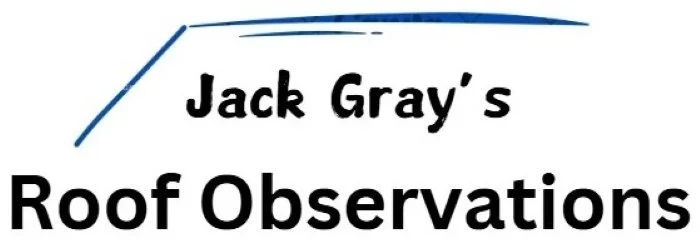Table of Contents

Introduction
For a detailed introduction to the concept of R-value, see my introduction to R-value.
The R-value chart that I put together here provides typical building insulation R-values, the R-value of roofing materials like shingles and single-ply membranes (roof covering materials), as well as other building materials. I provide RSI values as well.
These R-values were taken from manufacturer technical data sheets and are the reported R-values per inch of actual products. In a few cases, the R-values I give were taken from a non-manufacturer source that I consider trustworthy and accurate. This R-value chart is intended only as a general guide to material R-values, and the R-value of a specific product may be somewhat different from the R-value I give for that type of material.
Thermal performance can vary based on installation method, material age, moisture content, and temperature differentials across assemblies. For roofing systems in particular, compression, tapering, and joint spacing can all influence the effective R-value of a system, and roof assemblies should also be assessed for thermal bridging.
Check with the Manufacturer
If you’re trying to calculate precise a R-value for a real-life installation, you should always refer to the manufacturer’s product data sheets for the actual, specific product that you are using or planning to use. You can also contact the technical department of the product manufacturer or material provider; the people who work in technical departments look forward to getting phone calls and getting a chance to explain things and they’ll be happy to answer any questions you might have. Most manufacturers put the phone number for their technical department on the contact page of their websites.
Manufacturers also typically provide downloadable technical documents that include R-values and R-value certifications on their websites, sometimes including third-party testing results and compliance documentation for standards such as ASTM C518 and ISO 8301. These resources can offer greater precision for thermal modeling and code compliance verification.
R-Value, RSI, and U-Value
R-value is the most common measure of thermal resistance used in the United States. Its metric counterpart, RSI (R-value Système International), is used internationally. Both express a material’s resistance to conductive heat flow, but in different units: R-value is stated in ft²·°F·hr/BTU, while RSI is measured in m²·K/W.
To convert the R-value of a specific thickness of a material to RSI, divide the R-value by 5.67826. To convert RSI to R-value, multiply the RSI by 5.67826. For example, two inches of extruded polystyrene, with an R-value of 11, has an RSI of 1.93721 (11 divided by 5.67826).
U-value, or thermal transmittance, is another related measurement that quantifies how much heat energy is transmitted through a building component. It is the inverse of total R-value (U = 1/R). Lower U-values indicate higher insulating performance. U-values are most often used in whole-assembly performance analysis, particularly in energy codes and for fenestration products, whereas R- and RSI-values apply to individual material layers.
R-Value and Energy Codes
Note that your local code will probably not allow you to include the R-values for roof membranes, shingles, tiles, air films, and roof deck materials when total roof assembly R-value is being calculated for the purpose of satisfying energy code requirements.
Always check with your local code authority to find out your current local R-value requirements as well as which materials or parts of a building component you are permitted to use when you calculate the total R-value of a system.
Energy codes like the International Energy Conservation Code (IECC) and ASHRAE 90.1 specify minimum thermal performance standards based on climate zone and building type. These codes typically define the R-value requirement for continuous insulation only, excluding components such as roof membranes or interior air films unless explicitly stated. Compliance may be based on either the prescriptive R-value path or the performance-based U-factor or energy modeling paths. To ensure compliance, it’s essential to confirm whether your jurisdiction has adopted amendments or supplements that alter the baseline requirements.
Table: Standard R-Values for 49 Building Materials
Note 1: While the R-value for a material is typically given per inch, the RSI is typically given per millimeter, so you should be aware that the R-values and RSI values for the materials in the following R-value chart are not for equivalent thicknesses.
Note 2: This R-value chart provides R-values for roof coverings such as roof shingles and single-ply roof membranes. These R-values are the totals for the typical as-installed thicknesses of those materials. They are not R-values per inch for the material.
| R-Value of Building Insulation, Roofing, and Other Materials | ||||
|---|---|---|---|---|
| Material | R-Value per Inch | RSI per Millimeter | R-Value for TYPICAL INSTALLED Thickness | Source |
| Aerogel | 10.0 | 0.06973 | U.S. Department of Energy | |
| Asphalt Shingles | 0.44 | National Roofing Contractors Association | ||
| Autoclaved Aerated Concrete | 1.25 | 0.00873 | International Masonry Institute | |
| Brick (Common) | 0.20 | 0.00139 | Penn State | |
| Built-up Roof Membrane, Gravel-Surfaced (Membrane and Gravel Only) | 0.33 | National Roofing Contractors Association | ||
| Built-up Roof Membrane, Smooth-Surfaced (Membrane Only) | 0.24 | National Roofing Contractors Association | ||
| Cellulose, Blown (Attic) | 3.8 | 0.02638 | Cellulose Insulation Manufacturers Association | |
| Cellulose, Blown (Wall) | 3.8 | 0.02638 | Cellulose Insulation Manufacturers Association | |
| Cellulose, Wet Spray | 3.75 | 0.02598 | International Cellulose Corporation | |
| Concrete, Lightweight Insulating | 0.90 – 1.49 | 0.00630 – 0.01024 | Siplast | |
| Concrete, Structural (140 pcf) | 0.08 | 0.00040 | Siplast | |
| Cotton Batt Insulation | 3.7 | BuildingGreen | ||
| EPDM Roof Membrane, Ballasted (Membrane and Ballast Only) | 0.33 | National Roofing Contractors Association | ||
| EPDM Roof Membrane, Fully-Adhered or Mechanically-Attached (Membrane Only) | 0.24 | National Roofing Contractors Association | ||
| Fiber Cement Shingles | 0.21 | National Roofing Contractors Association | ||
| Fiberglass, Batt | 3.14 – 4.29 | 0.02165 – 0.02992 | Johns Manville | |
| Fiberglass, Blown (Attic) | 2.12 – 4.0 | 0.01457 – 0.02756 | Johns Manville | |
| Fiberglass, Blown (Wall) | 4.0 – 4.3 | 0.02756 – 0.02992 | Johns Manville | |
| Fiberglass, Rigid Board | 4.3 – 4.5 | 0.02992 – 0.03110 | Johns Manville | |
| Gypsum Board | 0.90 – 1.12 | 0.00630 – 0.00787 | United States Gypsum Company; Georgia-Pacific | |
| Metal Roof Panels | No Useful R-Value | National Roofing Contractors Association | ||
| Mineral Wool, Batt | 4.0 – 4.22 | 0.02756 – 0.02913 | Owens Corning | |
| Mineral Wool, Blown (Attic) | 2.95 – 3.39 | 0.02047 – 0.02362 | Owens Corning; American Rockwool North America | |
| Mineral Wool (Rigid Board) | 3.8 | 0.02638 | Rockwool Group | |
| Modified Bitumen Roof Membrane, Granule-Surfaced (Membrane Only) | 0.15 | National Roofing Contractors Association | ||
| Oriented Strand Board (OSB) | 1.0 – 1.24 | 0.00709 – 0.00866 | University of Minnesota | |
| Particle Board | 1.31 | 0.00932 | University of Washington | |
| Perlite (Loose Fill) | 2.7 | 0.01886 | InterNACHI | |
| Perlite Cover Board | 2.64 | 0.01811 | Johns Manville | |
| Phenolic Foam Board | 6.7 – 7.5 | 0.04646 – 0.05197 | Dow Chemical Company | |
| Plywood | 1.0 – 1.24 | 0.00709 – 0.00866 | University of Minnesota | |
| Polyethylene Foam | 3.2 | 0.02210 | Foam Factory | |
| Polyiso Insulation (Polyisocyanurate) | 5.0 (NRCA) 5.7 (PIMA) | 0.03465 (NRCA) 0.03937 (PIMA) | National Roofing Contractors Association; Polyisocyanurate Insulation Manufacturers Association | |
| Polyisocyanurate Board (High Density) | 5 | 0.03465 | 2.5 | Polyisocyanurate Insulation Manufacturers Association |
| Polystyrene, Expanded (EPS) | 3.85 – 4.5 | 0.02677 – 0.03110 | Insulation Technology, Inc.; ACH Foam Technologies | |
| Polystyrene, Extruded (XPS) | 5.0 – 5.5 | 0.03465 – 0.03819 | XPSA (Extruded Polystyrene Foam Association) | |
| PVC Roof Membrane, Fully-Adhered or Mechanically-Attached (Membrane Only) | 0.24 | National Roofing Contractors Association | ||
| Slate Roofing | 0.05 | National Roofing Contractors Association | ||
| Sprayed Polyurethane Foam (Closed Cell) | 4.9 – 7.1 | 0.03386 – 0.04921 | Icynene, Inc. | |
| Sprayed Polyurethane Foam (Open Cell) | 3.7 – 4.0 | 0.02559 – 0.02756 | Icynene, Inc. | |
| Tectum Roof Deck | 1.84 | 0.01313 | Armstrong Ceilings | |
| Tile Roofing, Including Batten System and Air Space | 2.95 | Boral Roofing | ||
| TPO Roof Membrane, Fully-Adhered or Mechanically-Attached (Membrane Only) | 0.24 | National Roofing Contractors Association | ||
| Vacuum Insulated Panel (VIP) | 66 | 0.45973 | Panasonic Corporation | |
| Vermiculite (Loose Fill) | 2.44 | 0.01709 | The Cary Company | |
| Wood (Typical Hardwood) | 0.7 | 0.00472 | U.S. Department of Energy | |
| Wood (Typical Softwood) | 1.4 | 0.00984 | U.S. Department of Energy | |
| Wood Fiberboard | 2.5 | 0.01732 | Blue Ridge Fiberboard, Inc | |
| Wood Shakes and Shingles (Cedar) | 0.94 | National Roofing Contractors Association | ||
R-Value Sources:
- ACH Foam Technologies (now part of Atlas Molded Products)
- American Rockwool
- Armstrong Ceilings
- Blue Ridge Fiberboard, Inc
- Boral Roofing (now part of Westlake Royal Roofing)
- BuildingGreen
- Cellulose Insulation Manufacturers Association
- Dow Chemical Company
- Foam Factory, Inc
- Georgia-Pacific
- Icynene, Inc. (now part of Icynene-Lapolla)
- Insulation Technology, Inc
- InterNACHI
- International Cellulose Corporation
- Johns Manville
- International Masonry Institute
- National Roofing Contractors Association
- Owens Corning
- Panasonic Corporation of North America
- Penn State
- Polyisocyanurate Insulation Manufacturers Association
- Rockwool North America
- Siplast
- The Cary Company
- U.S. Department of Energy
- United States Gypsum Company
- University of Minnesota
- University of Washington
- XPSA (Extruded Polystyrene Foam Association)

